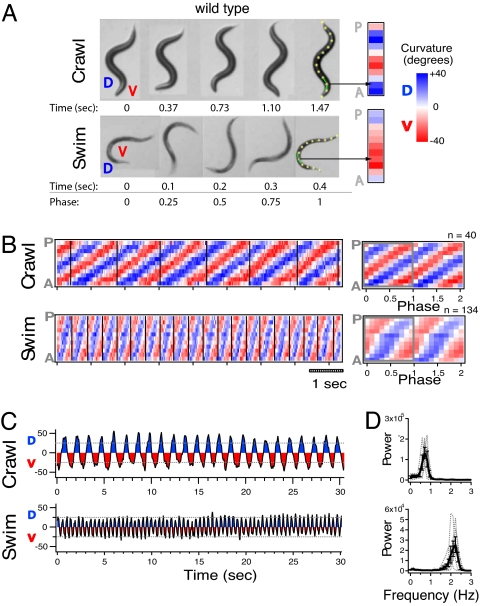Fig. 1.
Crawling and swimming are characterized by distinct kinematics. (A) Video frames of the same WT animal crawling and swimming. Time and phase of the DV head-bend cycle are indicated below each frame. DV cycle start is defined as the moment the head turns dorsal. Note that the body always forms a C-like shape immediately before this turn. Curvature columns (Right) represent curvature for each of the 11 angles along the example midlines aligned anterior to posterior (A, P). Example angles are matched by arrows. (B) Crawl and swim curvature matrices for a WT individual. Average curvature matrix for DV head-bend cycles are shown (Right) with number of averaged cycles indicated above. (C) Plots of neck curvature versus time for the same individual. Plots of average power versus frequency of neck curvature across individuals (D). Individual traces are indicated by gray lines. Bars represent SEM.

